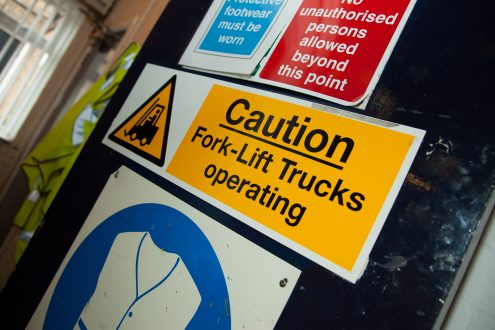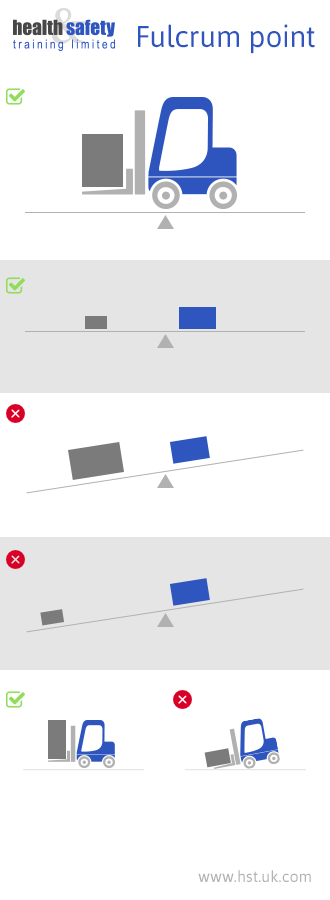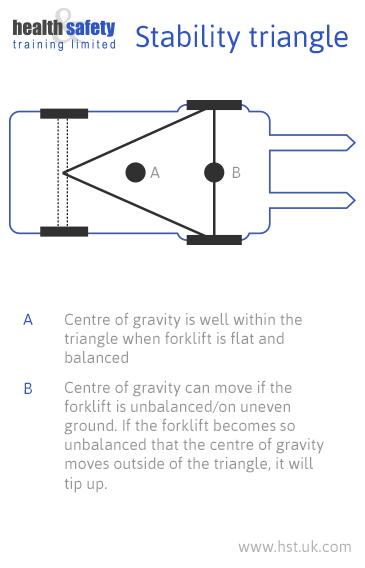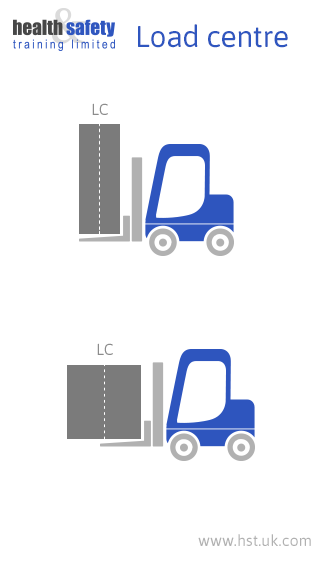Celebrating 20+ years in business!

Jargon Buster

Read our reviews
Jargon Buster
Legal
-
Appointed person
Every workplace should have an appointed person, designated by the employer, who is responsible for taking charge in the event that a coworker or colleague falls ill or is injured at work. This person should be trained in first aid and competent to provide assistance until the emergency services arrive. Their other duties may include restocking the first aid kit and recording incidents in the accident book.
-
Competent Person
Every employer must appoint and train a competent person to meet the requirements of health and safety legislation. That competent person must have sufficient training, experience and knowledge to assist with effective health and safety management. The required level of competence will depend on the tasks they will be assigned, as well as the complexity and risk level of the situations they will be dealing with.
-
Prohibition Notice
A prohibition notice is issued by a Health and Safety Executive (HSE) inspector if they believe a work activity presents a risk of serious personal injury. The notice is a legal demand that the the dangerous activity is ceased immediately, and you must not resume that activity until steps have been taken to eliminate or reduce the risk.
-
Duty of Care
Every employer has a legally imposed duty of care to their employees to protect them from harm and unnecessary risks. This means employers should, as far as is reasonably practicable, take steps to remove or reduce risks to ensure their health, safety and wellbeing. To fulfil a duty of care, a risk assessment can be conducted to identify all potential risks.
-
Risk Assessment
A risk assessment is a legal requirement for all businesses. It is a methodical process of identifying and evaluating all the potential risks present at a place of work, or for a specific project or task, in order that the risks can be protected against. The finished assessment should also include the precautions put in place to reduce or remove the risk and it should be reviewed and updated regularly.
-
Reasonably Practicable
The concept of reasonably practicable is key to the the UK’s health and safety system. It is often used in the phrase ‘so far as is reasonably practicable’ or ‘as low as reasonably practicable’.
It essentially means that you must weigh up the cost (in time, money or effort) of the steps needed to reduce or eliminate a risk, against the the level of harm and the likelihood of the hazard materialising. If the risk is insignificant in relation to the cost, the employer has a lower duty of care to protect against that risk.
So, if the risk is very likely or the level of harm is severe, you would be expected to take more costly steps to avoid that risk. If the risk is unlikely or the level of harm is minor, you would not be expected to take costly steps to avoid it.
-
Thorough Examination
A Thorough Examination is a detailed exam of a piece of equipment, such as a forklift and it’s safety-critical parts, undertaken at specific times (eg. before every use) by a competent person. According to LOLER (Lifting Operations and Lifting Equipment Regulations 1998), the examiner must then produce a report detailing:
- the examination date
- the date the next examination is due
- any defects or faults found which present a risk
If a fault is found, the examiner must report it to the dutyholder for maintenance.
-
Approved Code of Practice
Health and safety legislation and regulations are often supplemented by Codes of Practice approved or issued by the Health and Safety Commission. These Approved Codes of Practice offer practical advice and guidance to assist with compliance. An Approved Code of Practice is not law, and so it is not an offence to fail to comply with it.
-
Occupational Injury
An occupational injury is a personal injury resulting from an occupational accident. This is different to an occupational disease which is a disease resulting from exposure to a risk during work activity.
-
Occupational Disease or Illness
An occupational disease or illness is something that is caused by work activities or working conditions. It will be the result of exposure to a physical, chemical or biological risk to such an extent that it impairs the health of a worker.
Machinery / Vehicle / Forklift
-
Licence
There is no such thing as a forklift licence, or a specific ‘licence’ for any work vehicle. Instead it is a legal requirement that operators undergo adequate training to ensure they can safely operate the machinery they use, according to the Provision and Use of Work Equipment Regulations 1998 (PUWER).
-
Counterbalance
Counterbalance forklifts are the most common lift trucks in warehouses and factories. They can be used outdoors too, so long as the ground is stable and even. They stay upright thanks to a counterbalance weight at the back of the truck that offsets the load lifted at the front.
-
Telescopic
Telescopic forklifts are widely used in outdoors, in agriculture and industry. They resemble a crane of cherry picker and offer increased versatility thanks to a single telescopic boom that can extend forwards and upwards, reaching much greater heights than other forklifts.
-
Boom
A forklift boom is an attachment that can be used to extend the reach of a normal forklift. This allows operators to lift loads to a greater height, offering enhanced flexibility and a wider range of applications. A boom essentially turns a forklift into a mini-crane.
-
Pre-inspection/Pre-shift Checks
A pre-inspection should be carried out before each use on all equipment that could present a significant risk to health and safety if it is incorrectly maintained or faulty. The purpose is to identify any faults or problems that could affect safe operation, so they can be reported and remedied. It is essential that the operator carrying out the pre-inspection is competent and trained to do so, and keeps a record if the daily checks.
-
Pivot Point
The point at which something will begin turning, tipping or changing direction. See Fulcrum Point.
-
Fulcrum Point
The fulcrum point (or the pivot point) is the point at which a forklift load became too unbalanced or too heavy and can cause the vehicle to pivot or tip up.

It’s often explained like a see-saw in a kid’s play park; if both sides are evenly weighted it is balanced and stable, but if one side has a heavier load than the other, the heavier load must move closer to the middle (fulcrum point) to balance it out. Professional forklift training will teach operatives how to balance and load a truck to keep it stable and upright.
-
Stability Triangle
The stability triangle on most forklifts is made up of the three-point suspension system; the two front wheels and the pivot point of the rear axle.

When stationary or on flat ground, the forklift’s center of gravity is inside the stability triangle. When moving or on a sloping surface, the center of gravity moves. If the center of gravity moves outside of the stability triangle it will cause the forklift to tip up.
-
Load Capacity
The load capacity of a forklift is the absolute maximum weight it can lift or carry, and it should never be exceeded. The load capacity will be different for every type of forklift and is specified by the equipment manufacturer.
For more information, please visit How Many Animals Can A Forklift Lift?
-
Load Centre (LC)
The load centre of a forklift is the middle of the load, from front to back. It can be easily worked out by measuring the load and finding the middle – although the load would need to evenly distributed, and positioned up to back of the forks.

General Workplace
-
Hazard
A hazard is anything that has the potential to cause harm in the workplace. This can include:
- Objects and equipment, such as hand tools, machinery and chemicals
- An environmental issue, such as a loose-fitting carpet or the temperature
- A task that involves a hazard, such as working at height or in confined spaces
- A long-term hazard, such as repeated exposure to vibrations or loud noises
-
Risk
A risk is the likelihood, high or low, that a potential hazard will cause harmful effects. The severity of the hazard and the chance of the risk will be assessed during a risk assessment. Employers are expected to take more steps to reduce or remove a high risk/major hazard, that a low risk/minor hazard. See reasonably practicable.
-
Banksman
A banksman, signaller, spotter or dogman, is the person whose responsibility it is to direct the safe operation of a vehicle or large piece of equipment (such as a crane) by assessing the surrounding area and communicating with the operator.
-
Safe System of Work
A safe system of work (SSOF) is a systematic examination of a specific working process in order to identify all hazards and risks. The procedure results in the responsible person being able to define a working method that has been designed to remove the hazards or lower the risks.
-
Best Practice
In relation to health and safety, best practice refers to working methods or procedures that are commonly accepted as being correct. Although not law, best practice is often accepted in a court of law where there is no legislation that conflicts with, or covers the situation.
-
Safety Culture
The safety culture is the way safety issues are dealt with and every workplace is different. Some have an effective safety culture where all staff understand the importance of health and safety legislation and uphold safe practices. Some workplaces have an inadequate or even negligent safety culture, where health and safety is not a priority and staff and managers alike have little regard for safety matters.
-
Refresher Training
Refresher training is training in a subject matter previously covered in order to update skills and knowledge. Nearly all equipment used in construction and warehousing that requires a level of training to use will require refresher training at least every 2 years in line with health and safety law.
-
Traffic Route
A traffic route is often implemented in warehouses and on construction sites to create a separation between vehicles/traffic and pedestrians. Often these routes will have physical barriers to stop vehicles straying into pedestrianised areas, but at the very least they should be effectively marked and signed.
-
Manual Handling
Manual handling refers to the manual moving of any items, by lifting, lowering, carrying, pushing or pulling. To avoid injury, anyone expected to undertake manual handling as part of their job should be trained to ensure they know how to protect themselves from injury whilst moving items.
Abbreviations
-
PPE
PPE, or personal protective equipment, is equipment and tools provided to workers to protect them from work-related health and safety risks. This can include hard hats and hi-vis jackets, safety footwear, harnesses and goggles.
-
PAT
A PAT, or Portable Appliance Test, is the examination of electrical appliances in workplaces. All electrical appliances must be inspected for dangerous faults by a qualified electrician every year.
-
RIDDOR
RIDDOR is the accepted abbreviation for the Reporting of Injuries, Diseases and Dangerous Occurrences Regulations 2013. This legislation places a duty on employers, self-employed workers and anyone in control of a commercial premises to report specific workplace accidents and injuries to the correct governing body.
-
HASWA
HASWA is the accepted abbreviation for The Health and Safety at Work etc Act 1974.This is the primary piece of legislation governing all work-related health and safety in the UK.
-
COSHH
COSHH is the accepted abbreviation for Control of Substances Hazardous to Health, and usually refers to the legislation governing it: the Control of Substances Hazardous to Health Regulations 2002. The regulations place a duty on employers to limit employees’ exposure to hazardous substances.
-
HSE
The HSE or Health and Safety Executive is the national, independent body charged with protecting the public and employees in matters of work-related health, safety and illness.
-
LOLER
LOLER is the accepted abbreviation for the Lifting Operations and Lifting Equipment Regulations 1998. It covers equipment used at work to lift or lower workers or loads including, cranes, forklifts, hoists, MEWPs and any attachments.
-
PUWER
PUWER is the accepted abbreviation for the Provision and Use of Work Equipment Regulations 1998. It covers work equipment and machinery used in workplaces with the aim of keeping workers and bystanders safe.
-
MEWP
Mobile Elevated Working Platforms – a machine with a platform that allows workers to access heights safely. This includes cherry pickers and scissor lifts.
-
EPO
EPO stands for Emergency Power Off. Most equipment has an EPO or immediate stop button that ceases all movement and operation in case of emergency.
-
OEM
OEM is the Original Equipment Manufacturer. This is usually used to refer to manufacturer’s guidance and original parts.









